Hybrid petunia: types and subtleties of cultivation

There are a huge number of varieties of petunias, and every year their number only increases. Plants can be both annual and perennial. They look colorful and have a pleasant smell, which is why they are so popular with gardeners in our country.
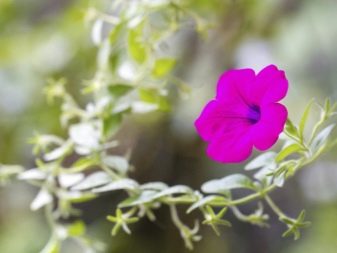
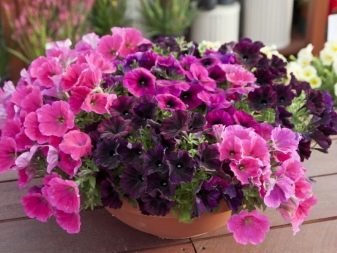
Description
Petunia is a plant of the Solanaceae family, native to South America. The plant was brought to Europe 2 centuries ago. Hybrid petunia is a type of flower that was bred at the beginning of the last century.

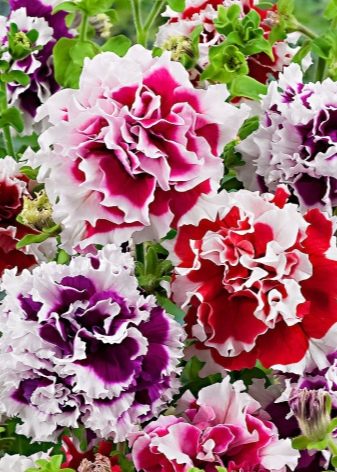
Its features are as follows:
- flowering starts in July, lasts until November;
- it is easy to care for plants;
- reproduction takes place with the help of seeds;
- terry species propagates by cuttings;
- has good resistance to temperature and humidity changes;
- small seeds "hide" in a bivalve box;
- leaves are covered with soft hairs;
- the plant retains its ability to bear fruit for several seasons (4 years).
Hybrids are classified into:
- dwarf;
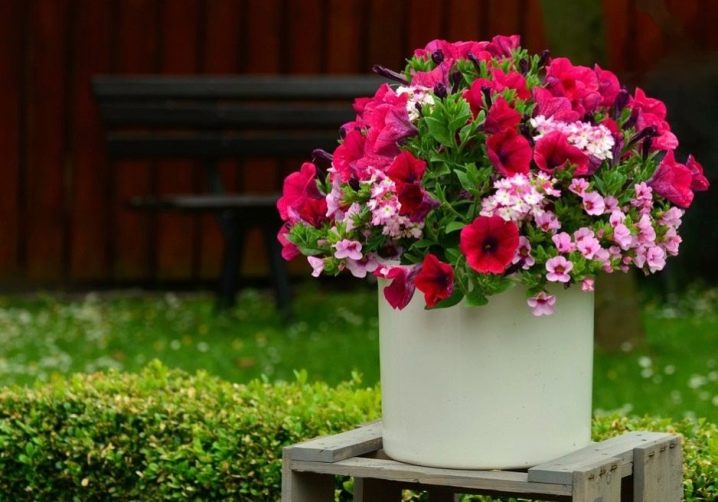
- ampelous;
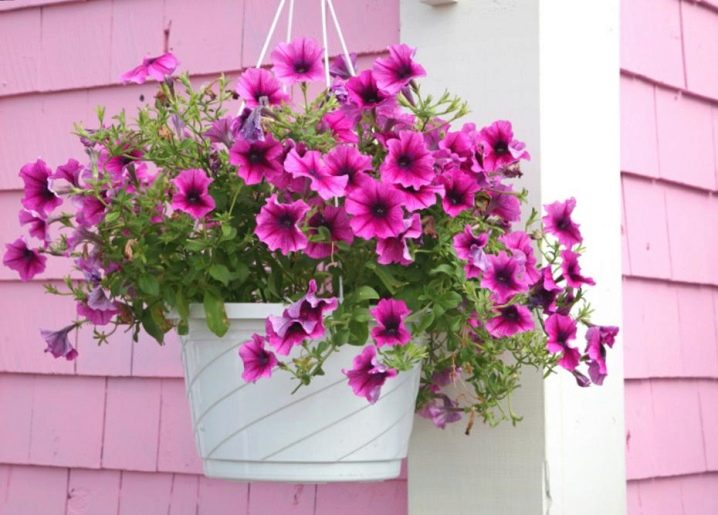
- cascading.
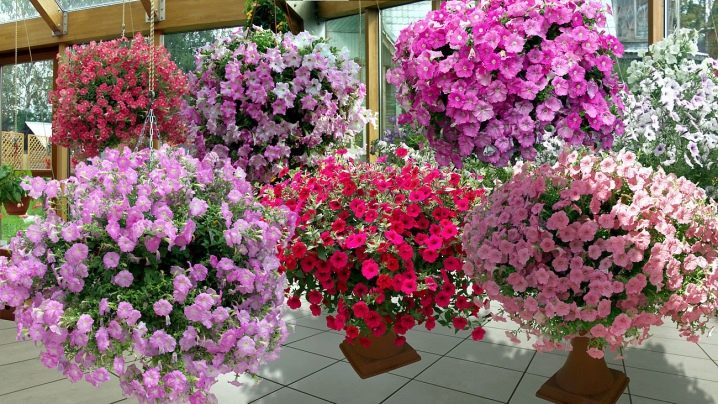
The first type reaches a length of no more than 16 cm, such flowers decorate balconies, vases, flower beds. Plants can work well as a decorative border on the ground. Petunia requires careful attention to herself, she needs timely watering and an abundance of sunlight.
Varieties
Petunia "Cherry Crystal F1" (multi-flowered mixture) - this is an annual plant, grows up to 32 cm, the flower reaches 7 cm in diameter. The plant is profusely blooming, completely covered with flowers. Their colors can be very different. It is recommended to plant a flower at the end of February, the plant requires a lot of light and even artificial lighting. Seedlings appear within a week. A pick can be done when there are 2 leaves on a branch. The distance between plants should be 20 centimeters (but not more than 25). This variety is unpretentious, it can perfectly adapt to a variety of conditions.
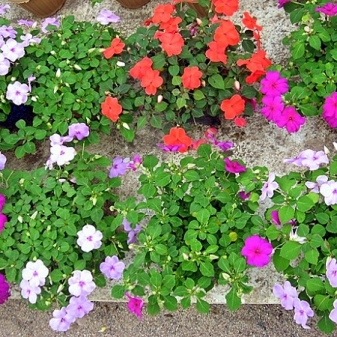
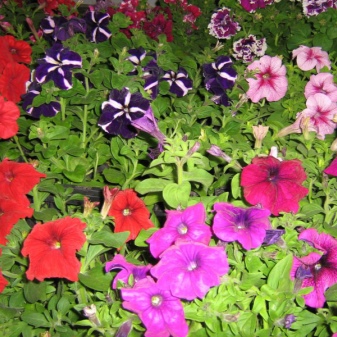
Evening Sense - This is a profusely flowering hybrid petunia. Several years ago, she won the main prize of the All-America Selections (AAS). The plant looks like a mixture of bright medium-sized flowers and different colors. Also petunia has a pleasant honey smell. You can see this plant most often in hanging baskets. The dimensions are modest: the height does not exceed 20 centimeters, the length reaches no more than a meter.


"Sofia F1" Is an innovative type of multi-flowered petunia. The flower grows up to a third of a meter, has a branched structure, blooms profusely. The diameter of the flowers reaches 7 cm (the minimum size is 5.2 cm). Kohler - a different shade of light pink, "star" shape. Seeds can be sown in the second half of March. Flowering lasts all warm seasons, from the second half of May. This variety of petunias perfectly withstands cold weather and high humidity, is grown mainly in flower beds, in boxes, containers.


"Marco Polo F1" Is the only petunia species that reproduces a huge number of colors. The plant blooms continuously, has long shoots. The soil grows up to 1 meter, reaches a height of 25 cm. It has good resistance to subzero temperatures (up to -7 degrees Celsius). It tolerates hot dry weather (up to +45 degrees Celsius). At an abnormal temperature, the plant continues to bloom, the metabolism is noticeably reduced, then the petunia grows noticeably more slowly. Outdoors, Marco Polo can create a luxurious, fragrant carpet.This variety is also planted in suspended containers.
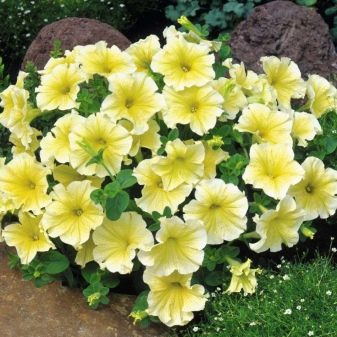
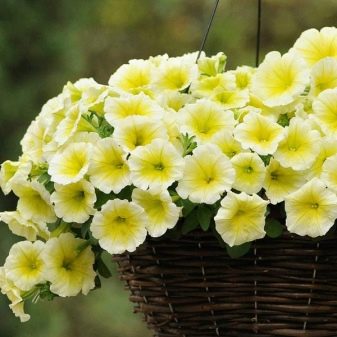
"Galaxy F1" - This is a hybrid annual petunia. It is a shrub with many branches. It can reach a height of up to a third of a meter. Blooms profusely in the warm season, up to frost. The flowers are like funnels of white color. The cups are surrounded by lace-like petals.
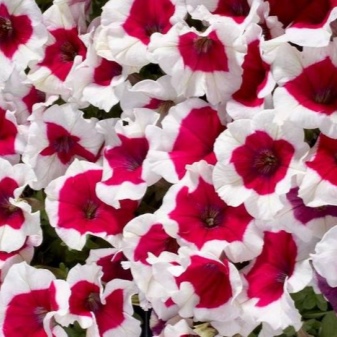
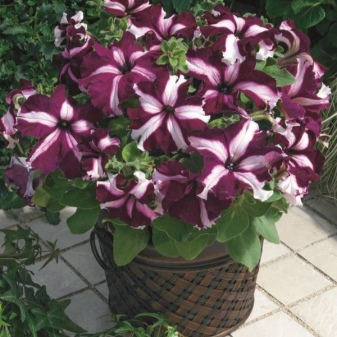
"Pendolino" - this variety is an annual hybrid. The origin comes from the Apennine Peninsula. Flowers are small, up to 3.5 cm in diameter. The bush branches profusely. Blooms during the warm season. Differs in good resistance to negative temperatures and dry hot weather. The plant can be found in flower beds, in hanging baskets, in the open field. The plant is also often used in landscaping.
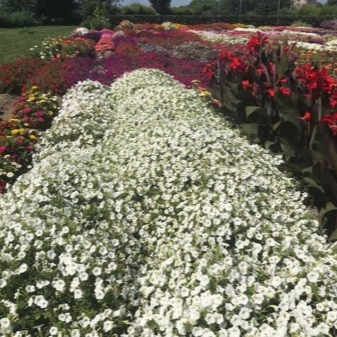
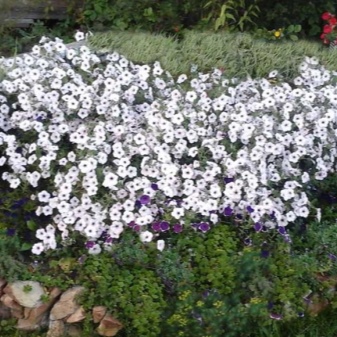
"Imperial F1 blue shimmer" it is distinguished by abundant flowering during the warm season. The presence of a gene for male sterility makes it possible to do without setting seeds. The plant can withstand frosts down to -6 degrees Celsius. It resists gusts of wind and torrential rains well, without losing its original appearance. This petunia grows very luxuriantly. When growing a plant, top dressing should be done, and in autumn, petunia is usually removed to a house or greenhouse and continues to bloom (a temperature slightly above + 20 degrees Celsius is required). For growing "Imperial" with the help of seedlings, the plants are covered with foil so that high humidity is present. A pick can be done when there are no more than 2 leaves on the plant. When 6 leaves appear, then pinching is done.
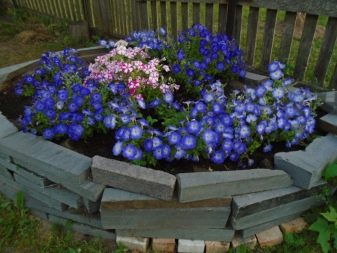

"Nora F1" differs in abundant branching. Reaches a height of one third of a meter. Flowers in the form of funnels, purple and blue colors (shades can be very different) The diameter of the flowers is up to 7 cm.The planting process takes place in early March, the seeds are not sprinkled with soil, only plentifully watered with warm water. After 3 weeks, the first shoots appear. A pick occurs when there are 2 leaves on a branch. The plant requires timely feeding and watering.
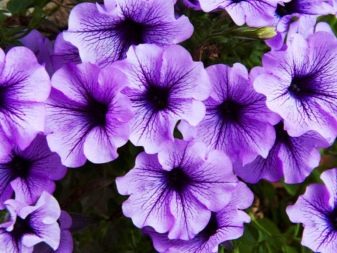

Trilogy F1 - a very beautiful variety of petunias. The flowers are medium in size, blooming profusely from May to November. The plant resists sub-zero temperatures well up to -5 degrees Celsius. Differs in lush flowering.
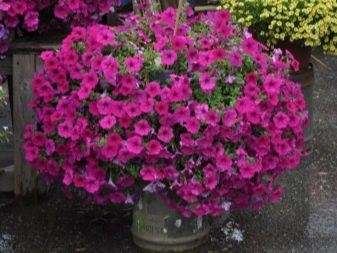
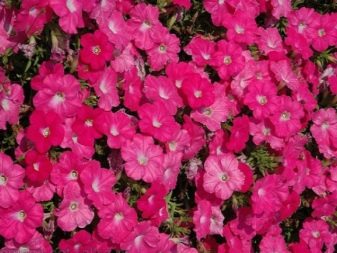
"Lambada Red Wayne F1" Is an annual plant. It also blooms very profusely, reaching a height of up to a third of a meter. Good resistance to adverse weather events. This variety is very fond of the abundance of light - the more, the better. To improve the metabolism of plants, dried flowers are removed. Petunia is afraid of freezing temperatures, it is grown using seedlings. Seeds are scattered over the ground at the end of February (do not drop in). All crops are covered with foil. The optimum temperature for plant development is +25 degrees.
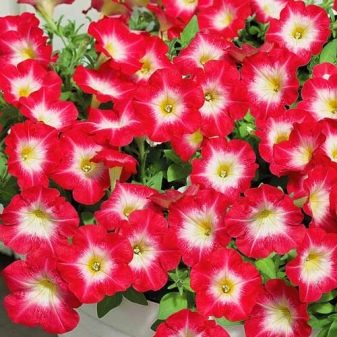
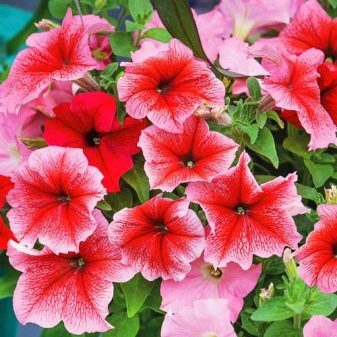
"F1 parade corduroy" - this hybrid grows up to a third of a meter in height. Seeds are scattered on the ground during the planting period, watered with water. Seedlings appear in 3 weeks, the optimum temperature for the plant is +22 degrees. The pick is done in the first half of April. In early May, the seedlings are placed in pots (up to 10 cm in diameter), where the growing process takes place. After 100 days, the seedlings are installed in open ground. If you follow a similar schedule, then petunia becomes hardy. The best soil for this variety is PH 5 or 6. It is recommended to feed petunia with complex fertilizers.


"Burgundy waterfall" - This terry hybrid is distinguished by its early flowering. It has good branching and grows quickly. Often used for ampel gardening. Flowers reach 12 cm in diameter. The plant is resistant to temperature and humidity extremes. It is good to decorate loggias and terraces with a "waterfall". All seeds are in granules. The sowing site should be lit, the optimum temperature is +19 degrees. Soil such petunia prefers drained lungs.Waterlogging and excessive dryness of the soil must not be allowed. The plant blooms profusely, from April to November.
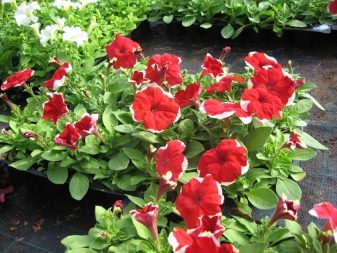

"Black Cherry F1" has beautiful velvet flowers of dark, even black color. It looks very impressive. Indoor plant, bush is dense, during the warm season such petunia looks original and attractive. Seedlings may appear within a week. It tolerates negative temperatures and excessive drought well. Loves moisture and warmth. The plant is used to decorate balconies and verandas.
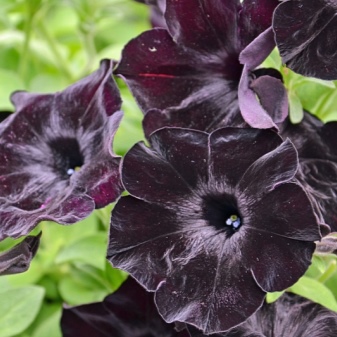
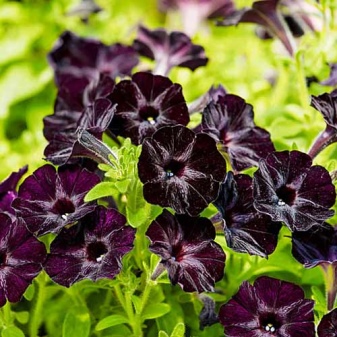
"Exotic Toulouse F1" - the plant is distinguished by great originality, it is considered an elite species. Flowers have shades of pink and pastel in a wide variety of variations. Exotic looks extremely impressive. Petunia stands out for its high endurance and long flowering time. The height does not exceed a third of a meter. A distance of no more than 45 cm is usually maintained between plants. It is not recommended to arrange a tight planting, this can negatively affect development. The soil should be kept moderately moist, then the petunia will develop well.
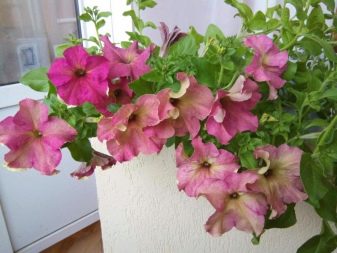
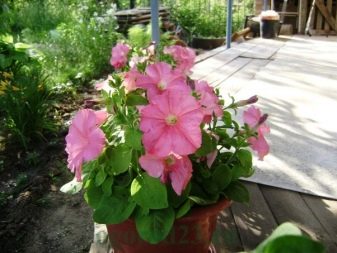
"Aphrodite white" - a new type of petunia, its flower is gigantic, there is a fringe around the edges. During flowering, the plant looks spectacular: large white flowers flaunt on the bush. Flowering lasts during the warm season. The plant is undemanding to care for and perfectly tolerates cold and drought. The soil should be constantly moderately moist.

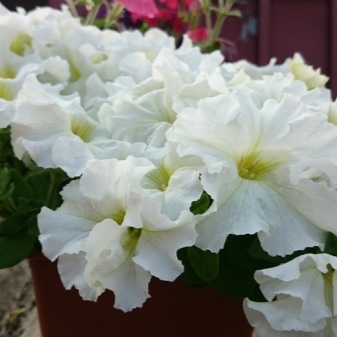
How to plant?
Terry varieties of petunias are best planted by cuttings. When planting, the soil should be well dug up and moistened. The plant must be covered with foil or glass so that the soil remains moist for as long as possible. The condition of the soil should be monitored on a daily basis. The transplant can be done with the appearance of the first leaves (3 pieces). If the plant has 5 leaves, then it must be pinched.
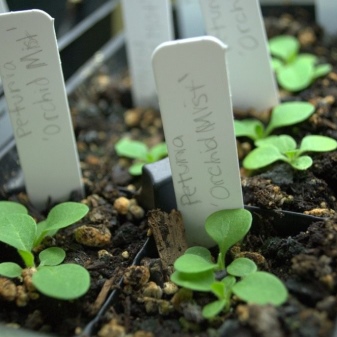
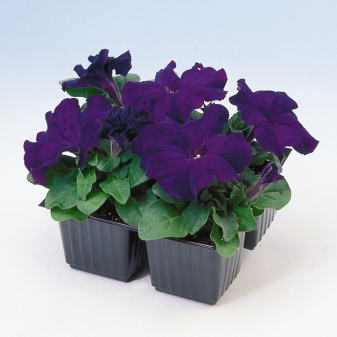
With the onset of the warm season, at the end of March, petunia is planted in open ground. The distance between the plants is about 26 cm. The first flowers will appear in 2.5 months. Before the onset of cold weather, plants are treated with special substances that counteract the vital activity of such pests:
- ticks;
- worms;
- slugs;
- fungus;
- mold and rot.
At the very end of January, cuttings (11 cm) are cut from the tops, immersed in a phytohormone solution for 3 minutes, this will help the roots to develop better. After that, the plants are installed in moist soil, covered with foil.
Saplings will develop best on the south side of the household.
With the onset of heat, containers with plants can be taken out to the loggia so that they breathe fresh air, from this they will become more hardy.
Care rules
Petunia grows best in acidic soils. Watering is always done on medium, the soil should not be too dry and not too wet. The distance between the seedlings is 6 cm. After the pick, additional fertilizing is added using a growth stimulator. Petunias are grown at a temperature of +20 degrees Celsius. Periodically, the soil is loosened. Pinching petunia begins when 6-7 leaves appear. Plants are sprayed with formulations that contain useful trace elements, for example, "Brexil". Once every 2 weeks, watering is carried out with the addition of phosphoric acid, at the rate of 4 cubic meters. cm in a bucket of water (10 liters).
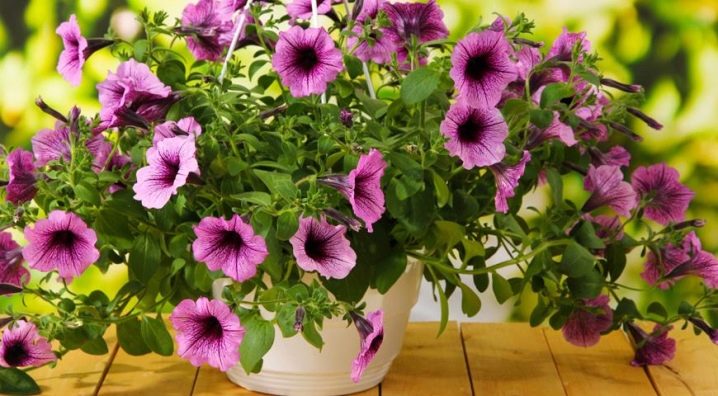
Diseases and pests
The main diseases of petunias are as follows.
- Chlorosis - can occur if the water from the water supply is not properly defended. Leaves are covered with white spots, growth stops.
- Cucumber mosaic - a disease that appears on the leaves with multi-colored spots.
- Tobacco mosaic - leaves become "spoon-shaped".
- Y virus - white streaks form on the leaves.
- Tomato virus - flowers become miniature, petals curl and change shape.
- X virus - the leaves are covered with spots, clustered in tubes.
- Blackleg Is a fungal disease, the root system and trunk in the area of the soil turn black and rot.
- Late blight may be triggered by cold weather. The branches darken and then turn brown.
- Spider mite - a formidable enemy of petunias and other plants. It is difficult to find, it is also difficult to withdraw it.
- Thrips - pose a great threat to the plant. Black streaks appear on the trunk and leaves.
Before planting, plants should be treated with biological products, as well as "Fitosporin", "Trichodermin". The soil is also often irrigated with a sulfur solution.
For the varieties and care of petunias, see the video below.







































































































The comment was sent successfully.